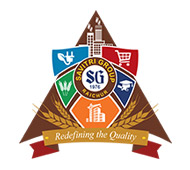Rice production in India is an important part of the national economy. India is one of the world’s largest producers of white rice, accounting for 20% of all world rice production. Rice is India’s preeminent crop, and is the staple food of the people of the eastern and southern parts of the country. Production of rice increased from 53.6 million tons in FY 1980 to 74.6 million tons in FY 1990, a 39 percent increase over a decade. By FY 1992, rice production had reached 111 million tons, second in the world only to China with its 182 million tons. Since 1950 the increase has been more than 350%. Most of this increase was the result of an increase in yields; the number of hectares increased only 40 percent during this period. Yields increased from 1,336 kilograms per hectare in FY 1980 to 1,751 kilograms per hectare in FY 1990. The per-hectare yield increased more than 262 percent between 1950 and 1992.
The country’s rice production declined to 89.13 million tons in 2009-10 crop year (July-June) from record 99.18 million tons in the previous year due to severe drought that affected almost half of the country.
Rice is one of the chief grains of India. Moreover, this country has the biggest area under rice cultivation, as it is one of the principal food crops. Rice is the basic food crop and being a tropical plant, it flourishes comfortably in hot and humid climate. Rice is mainly grown in rain fed areas that receive heavy annual rainfall. That is why it is fundamentally a kharif crop in India. It demands temperature of around 25 degree Celsius and above and rainfall of more than 100 cm. Rice is also grown through irrigation in those areas that receives comparatively less rainfall. Rice is the staple food of eastern and southern parts of India.







